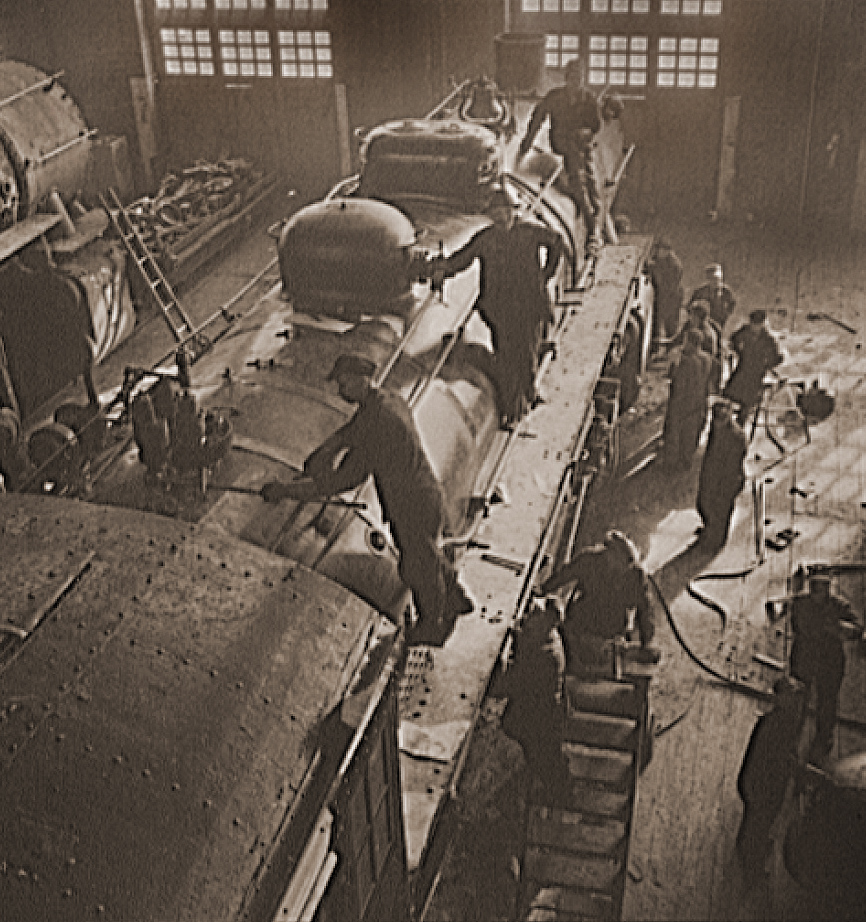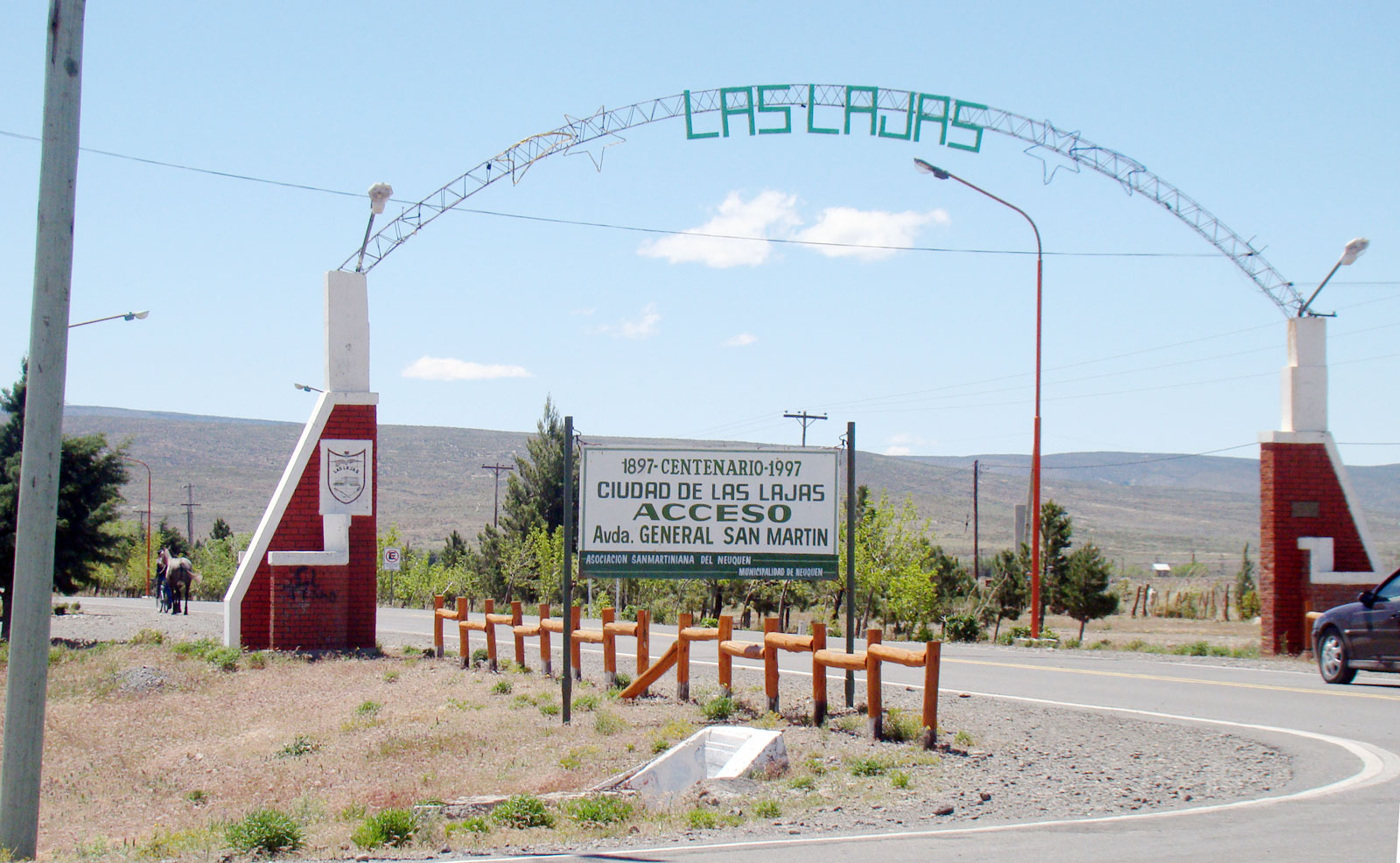|
Gregorio Álvarez Provincial Museum
The Gregorio Álvarez Provincial Museum (), is located in Neuquén, Argentina. Opened in 1986 and housed in an original 1901 railway building from the early days of the city, it is dedicated to the historic and cultural heritage of the Neuquén province. It offers a permanent archeologic exhibition of objects belonging to the local native tribes and different rotating ones related to the region's heritage. History The building of the current museum was built in 1901 by the Buenos Aires Great Southern Railway as a machine shed and a workshop within the lands belonging to the company, which would later become the city's Central Park in 1986. The year before, a local commission seeking to revalorize historical buildings and monuments proposed restoration of the building, preventing it from being demolished in order to construct a modern building complex. Remodeling started soon thereafter under the direction of architect Elena Coronel and the former railway workshop was adapted int ... [...More Info...] [...Related Items...] OR: [Wikipedia] [Google] [Baidu] |
Argentina
Argentina, officially the Argentine Republic, is a country in the southern half of South America. It covers an area of , making it the List of South American countries by area, second-largest country in South America after Brazil, the fourth-largest country in the Americas, and the List of countries and dependencies by area, eighth-largest country in the world. Argentina shares the bulk of the Southern Cone with Chile to the west, and is also bordered by Bolivia and Paraguay to the north, Brazil to the northeast, Uruguay and the South Atlantic Ocean to the east, and the Drake Passage to the south. Argentina is a Federation, federal state subdivided into twenty-three Provinces of Argentina, provinces, and one autonomous city, which is the federal capital and List of cities in Argentina by population, largest city of the nation, Buenos Aires. The provinces and the capital have their own constitutions, but exist under a Federalism, federal system. Argentina claims sovereignty ov ... [...More Info...] [...Related Items...] OR: [Wikipedia] [Google] [Baidu] |
Archeological Museum
Archaeology or archeology is the study of human activity through the recovery and analysis of material culture. The archaeological record consists of artifacts, architecture, biofacts or ecofacts, sites, and cultural landscapes. Archaeology can be considered both a social science and a branch of the humanities. It is usually considered an independent academic discipline, but may also be classified as part of anthropology (in North America – the four-field approach), history or geography. The discipline involves surveying, excavation, and eventually analysis of data collected, to learn more about the past. In broad scope, archaeology relies on cross-disciplinary research. Archaeologists study human prehistory and history, from the development of the first stone tools at Lomekwi in East Africa 3.3 million years ago up until recent decades. Archaeology is distinct from palaeontology, which is the study of fossil remains. Archaeology is particularly important for learni ... [...More Info...] [...Related Items...] OR: [Wikipedia] [Google] [Baidu] |
Neuquén Province
Neuquén () is a Provinces of Argentina, province of Argentina, located in the west of the country, at the northern end of Patagonia. It borders Mendoza Province to the north, Rio Negro Province to the southeast, and Chile to the west. It also meets La Pampa Province at its northeast corner. History The Neuquén Province receives its name from the Neuquén River. The term ''"Neuquén"'' derives from the Mapudungun (a local dialect of the Mapuche language) word ''"Nehuenken"'' meaning ''drafty'', which the aborigines used for the river. The word (without the accentuation) is a palindrome. Lácar Department in Neuquén Province has the southernmost known remains of maize before it was further diffused by the Inca Empire. Maize remains were found as far south as 40°19' S in Melinquina, with it being found inside pottery dated to 730 ±80 BP and 920 ±60 BP. This maize was probably brought across the Andes from Peru during the Inca Empire that also reached Chile. Agriculture was ... [...More Info...] [...Related Items...] OR: [Wikipedia] [Google] [Baidu] |
Buenos Aires Great Southern Railway
The Buenos Aires Great Southern Railway (BAGS) () was one of the ''Big Four'' Indian gauge, broad gauge, , British-owned companies that built and operated railway networks in Argentina. The company was founded by Edward Lumb in 1862 and the first general manager was Edward Banfield (railroad engineer), Edward Banfield after whom the Buenos Aires suburban station of Banfield, Buenos Aires, Banfield was named, when it opened in 1873. After president Juan Perón Railway Nationalisation in Argentina, nationalised the Argentine railway network in 1948, it became part of the state-owned company Ferrocarril General Roca. History Preliminary studies The market of Constitución, Buenos Aires, Plaza Constitución in Buenos Aires was served by carts coming from the South of the province that crossed the Riachuelo River, Riachuelo through the "Puente de Gálvez". This transport was too costly besides being slow, thus the products could not be carried on very long distances. In 1860, 7,41 ... [...More Info...] [...Related Items...] OR: [Wikipedia] [Google] [Baidu] |
Railway Workshop
Railway workshops are railway facilities in which rolling stock is repaired. While often colocated with engine sheds to perform routine tasks as well as major repairs, in some countries separated concepts exist with ''railway workshops'' being specialized in major repairs and general inspections. In German-speaking countries, the generic names ''Werkstatt'', or specifically in Austria ''Hauptwerkstatt'', are commonly used, except for Germany, where railway workshops maintained by Deutsche Bahn are called Ausbesserungswerk or simply ''Werk''. List of railway workshops *Australia **Eveleigh Railway Workshops ** Midland Railway Workshops **Newport Workshops ** North Ipswich Railway Workshops *Germany **see Ausbesserungswerk *India ** Jamalpur Locomotive Workshop ** Kanchrapara Railway Workshop ** Kharagpur Railway Workshop ** Carriage Repair Workshop, Lower Parel, Mumbai ** Golden Rock Railway Workshop New Zealand ** Addington Workshops ** East Town Workshops ** Hillside Eng ... [...More Info...] [...Related Items...] OR: [Wikipedia] [Google] [Baidu] |
Stained Glass
Stained glass refers to coloured glass as a material or art and architectural works created from it. Although it is traditionally made in flat panels and used as windows, the creations of modern stained glass artists also include three-dimensional structures and sculpture. Modern vernacular usage has often extended the term "stained glass" to include domestic leadlight, lead light and ''objet d'art, objets d'art'' created from glasswork, for example in the famous lamps of Louis Comfort Tiffany. As a material ''stained glass'' is glass that has been coloured by adding Salt (chemistry), metallic salts during its manufacture. It may then be further decorated in various ways. The coloured glass may be crafted into a stained-glass window, say, in which small pieces of glass are arranged to form patterns or pictures, held together (traditionally) by strips of lead, called cames or calms, and supported by a rigid frame. Painted details and yellow-coloured Silver staining, silver stain ... [...More Info...] [...Related Items...] OR: [Wikipedia] [Google] [Baidu] |
Las Lajas, Neuquén
Las Lajas ("The Flagstones") is a town in Neuquén Province, Argentina, and the capital of Picunches Department. The town, at an altitude of above mean sea level, is located on the right shore of Agrio River at the Andean foothills. National Routes 22 and 40 intersect in this area of the central Neuquén Province. The Cuchillo Curá range, considered the most important underground ecosystem in Argentina, extends approximately from Las Lajas. Before the Araucanization of Patagonia, Las Lajas was originally populated by Pehuenche and Picunche natives. In 1788, the first expedition into the territory, under the command Francisco Esquivel y Aldao, reached Las Lajas. In 1882, commander Ortega established a fort for the Argentinian Army. The town was established on 8 February 1897, by General Enrique Godoy, the Argentinian Army's 4th Division commander. To take possession of the region and protect the inhabitants from the natives, the town became the headquarters of the 8th and 9th ... [...More Info...] [...Related Items...] OR: [Wikipedia] [Google] [Baidu] |
Locomotive
A locomotive is a rail transport, rail vehicle that provides the motive power for a train. Traditionally, locomotives pulled trains from the front. However, Push–pull train, push–pull operation has become common, and in the pursuit for longer and heavier freight trains, companies are increasingly using distributed power: single or multiple locomotives placed at the front and rear and at intermediate points throughout the train under the control of the leading locomotive. Etymology The word ''locomotive'' originates from the Latin language, Latin 'from a place', Ablative case, ablative of 'place', and the Medieval Latin 'causing motion', and is a shortened form of the term ''locomotive engine'', which was first used in 1814 to distinguish between self-propelled and stationary steam engines. Classifications Prior to locomotives, the motive force for railways had been generated by various lower-technology methods such as human power, horse power, Gravity railroad, g ... [...More Info...] [...Related Items...] OR: [Wikipedia] [Google] [Baidu] |
Neuquén Railway Station
Neuquén is a train station in the Neuquén, homonymous city in Argentina, which is served by the Ferrosur Roca's Zapala-Bahía Blanca freight service and the Tren del Valle commuter service. Situated on the Central Park in the city center, adjoining other historical railway constructions such as the Emilio Saraco Art Gallery, it was declared a building of historical relevance by the Government of Argentina, National Government. Opened in 1902, the station played a significant role in the region's development and the decision to declare it the capital of the National Territory, which was to become the current Province in 1955. History Amid the expansion of the Buenos Aires Great Southern Railway to connect the Neuquén National Territory with Buenos Aires in view of a potential armed conflict with Chile, the Neuquén-Cipolletti bridges, railway bridge over the Neuquén River was finished in 1902 and the station was opened the same year. The train connection with the national cap ... [...More Info...] [...Related Items...] OR: [Wikipedia] [Google] [Baidu] |
Emilio Saraco Art Gallery
The Saraco Art Gallery (), founded in 1992, is located in Neuquén, Argentina, is considered one of the city's main cultural spaces. The 1911 originally railway building was declared of public and historic interest for the city. It mostly hosts visual art exhibitions from local artists. History The British-owned company Buenos Aires Great Southern Railway constructed the building as a warehouse for parcels and loads in 1911, some years after the opening of the Neuquén station. It was subsequently acquired by the General Roca Railway, a division of the State-owned company Ferrocarriles Argentinos in 1948 during the railway nationalisation under the Juan Perón presidency. The building belonged to the National railway system until the beginning of the 1990s when the railway network was privatised during the Menem administration. Instead of continuing its function as a railway building, it was passed to the Neuquén province authorities, who decided to reconvert it into an Art ... [...More Info...] [...Related Items...] OR: [Wikipedia] [Google] [Baidu] |
Museums In Argentina
A museum is an institution dedicated to displaying or preserving culturally or scientifically significant objects. Many museums have exhibitions of these objects on public display, and some have private collections that are used by researchers and specialists. Museums host a much wider range of objects than a library, and they usually focus on a specific theme, such as the arts, science, natural history or local history. Public museums that host exhibitions and interactive demonstrations are often tourist attractions, and many draw large numbers of visitors from outside of their host country, with the most visited museums in the world attracting millions of visitors annually. Since the establishment of the earliest known museum in ancient times, museums have been associated with academia and the preservation of rare items. Museums originated as private collections of interesting items, and not until much later did the emphasis on educating the public take root. Etymology The ... [...More Info...] [...Related Items...] OR: [Wikipedia] [Google] [Baidu] |







